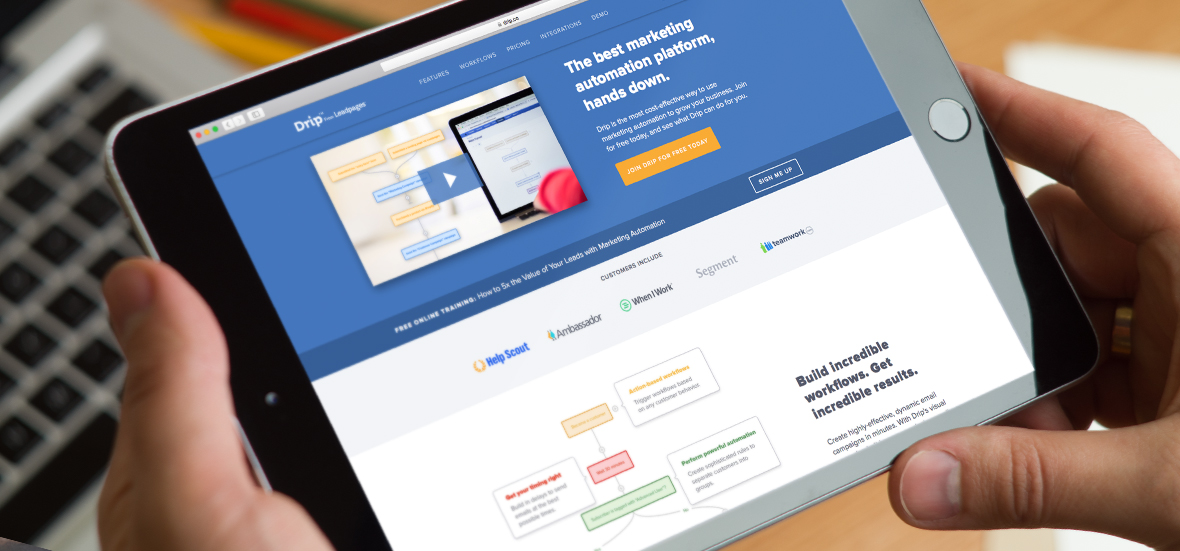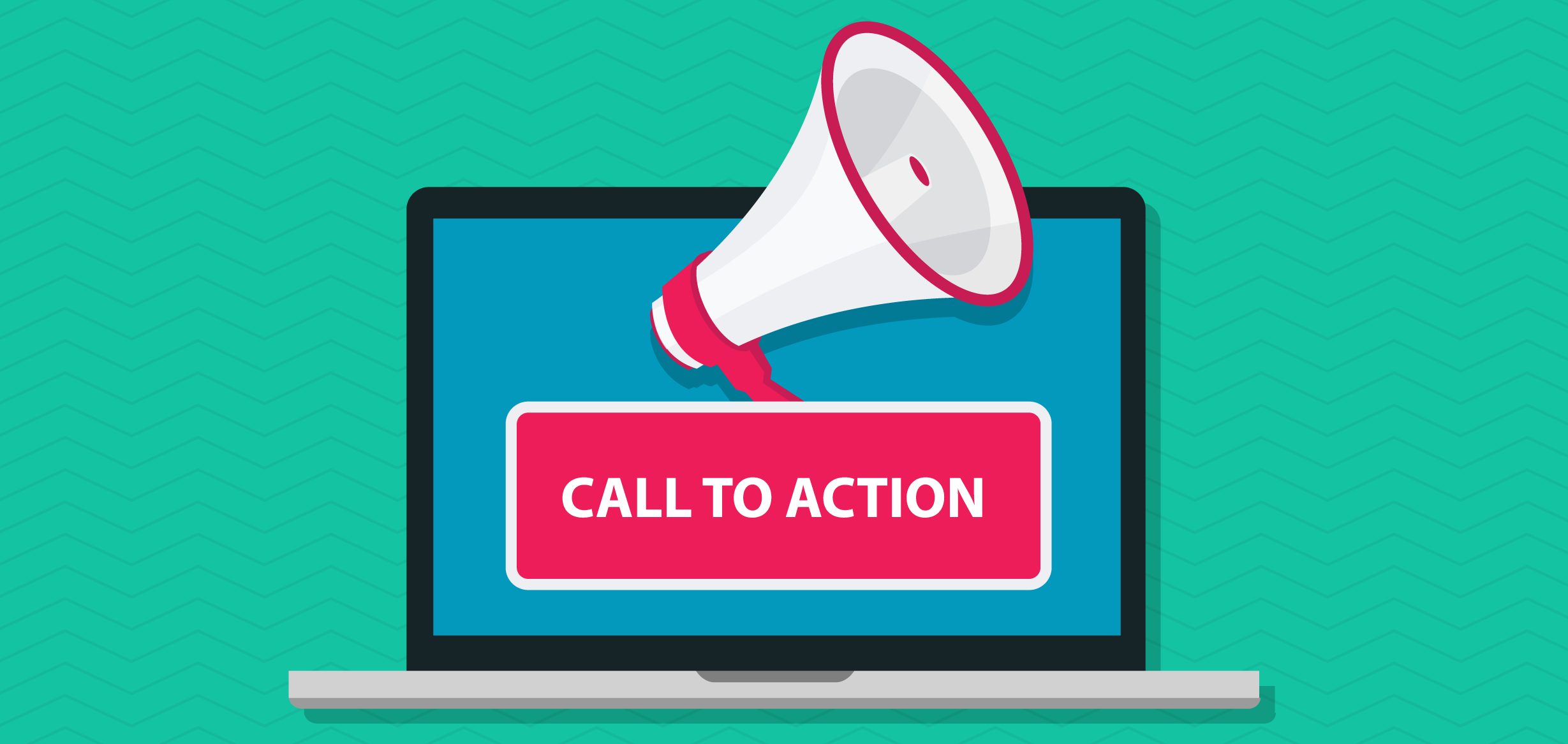If you ask around, most people will say they get way too much email — but when you review the numbers, results show that people prefer to receive important communication from companies via email. Email isn’t going anywhere and it is, in fact, still the best way to effectively acquire new customers.
So why does email have such a bad reputation? Well there’s spam, of course, and then there are the companies that do email the wrong way. The days of blasting out brand emails that are all me, me, me are over. We’re moving full force into drip emailing and more personalized marketing automation. If you’re a marketer and you haven’t been using drip emails and automation to communicate with your leads and subscribers, then you are doing everybody a disservice. Drip email sequencing can be highly effective when done right.
>> Download the Whitepaper: How to Leverage Content Marketing to Power Your B2B Marketing Automation Funnel
Why drip emails
Drip email marketing involves delivering your marketing message over a set period, in timed-released intervals. It’s the simple action of interacting with your audiences on multiple “touch points,” keeping your prospects and customers engaged day after day or week after week or month after month.
Drip marketing is based on the concept of reaching out to a target over several iterations and building trust over time. Emails delivered in this format allow you to turn nurtured leads into customers by delivering information at the right time during their buying cycle. This is especially effective when you have a high-ticket item that prospects need more information on before they buy.
In today’s highly competitive market, with consumers who have easy access to internet research and buying tools, it’s nearly impossible to simply show up once and expect that the customer will buy. Marketers must think of creative ways to engage their prospects, gain their acceptance and then eventually their trust.
The current, unfortunate, state of most email marketing campaigns today goes as follows:
- Person purchases product from online store.
- Person receives a receipt via email from store.
- One day later, person receives an email from store thanking him or her for his or her recent purchase.
- Two days later, person receives another email from store about a sale on a product they just purchased.
- Person feels a two-part frustration, first, that he or she received an unwanted email; and then that email is about a sale on the same exact product just purchased.
- A week later, person receives another promotional email from store.
- Another week later, person receives another promotional email from store.
- Another week later, person receives another promotional email from store (you notice the pattern here?).
- Customer unsubscribes.
That valuable customer is now out of your cycle and you have provided nothing of value after his or her initial purchase. There’s a better way to grow, cultivate and convert your email subscribers into loyal followers and repeat customers. With drip emails, you pick a set cadence in which you reach out to your subscribers over time. It can be daily, weekly, monthly or however frequently you chose. Each email acts as its own standalone piece of information, but builds upon the last email.
Types of drip campaigns
There are a variety of types of campaigns that you can deliver over drip email sequences.
Customer re-engagement
A customer re-engagement campaign can be delivered using drip sequences and they’re especially perfect for sending out after someone has made a purchase. If your product has set up instructions, it would be incredibly useful to receive a series of how-to videos followed up by inspirational ideas supporting the use of your product.
Prospect re-engagement
You don’t only have to email your current customers with drip sequences. Prospect re-engagement is another great way to keep your leads that have not yet converted in your prospect loop. By keeping this set of your subscriber base engaged with useful content that gives them information that helps them get to know you and your product over time is very effective in this case.
Educational engagement
One of the more common types is educational engagement, where you can create a mini-course teaching on a topic over the course of the email sequence. This works especially well for informational and services businesses.
Limited time engagements
Limited time engagements also make a great use case for drip emails. If you have a workshop coming up and want to get your subscribers excited about it, you can deliver a series of teasers on what they will get from the event. If you have guest speakers presenting at your workshop, how great would it be to send video teasers of your speakers in action, doing what they do best.
Many email tools focus on drip
Drip.co is one of the many email service providers that focus on automation and drip email sequencing. There are many other service providers you can choose from to create your drip campaigns. MailChimp recently released its drip and automation features. Other providers to look at include HubSpot, Customer.io, QuickMail, and SendLoop, to name a few.
I used an email course to keep my subscribers engaged
Below is an example of a drip email mini course I created on mastering content creation. The course was delivered over a period of four weeks. Each week contained a new topic and actionable item that the reader could specifically apply. Spreading the mini course out over four weeks allowed my subscribers to try out any practical tips without feeling too overwhelmed. An email course delivered over five days or four weeks gives your audience time to get to know and trust you before buying.
Another reason why drip works so well in a course format is that it creates a sense of FOMO (fear of missing out) in the reader’s mind. With information that is delivered in a closed cycle timeline — in that there’s a defined end date (in this example, four weeks) — a person will not want to miss out on information.
Segmenting your campaigns
When setting up a drip campaign, don’t feel as if you have to send it out to your entire list. In fact, the great thing about drip email and automation is that you have the ability to set up automated email campaigns to different segments of subscribers.
Many email platforms have the ability to send out trigger-based emails. Triggers are actions that send a specific email to a person based on an action that they took on your site or through a previous email. Tailor your campaigns to specific audiences based on who they are, what they are interested in and where they are in your customer cycle.
Outline your main points
Now that you’ve determined which segments will receive which campaigns, you can begin drafting your emails. Start by outlining the main points you will make and what you intend to cover. Pick key points for each email that can stand alone but that also support the overall theme.
Your emails should follow an order that will make sense to your readers. Remember that each reader is giving you his or her attention over a period of time. At the same time, keep in mind that everyone doesn’t have the same schedule, nor do they have the same email reading habits. Some readers may be attentive and read every single one of your emails; others may only have time to get through scattered pieces. As you can see in my email mini-course, my email during Week 1 and Week 4 had a 100 percent open rate, while Week 2 and Week 3 had drop offs.
You can set up automation scenarios and triggers for those that fall behind and miss an email. However, it’s extremely critical that each email is strong enough to stand on it’s on, but is set up to recap what the reader may have missed from any previous emails. Encourage your readers to go back and read previous emails in the sequence when possible.
You must have an end goal
One of the most important things that you can do when setting up a drip campaign is set up your call to action. As you outline your topics, include a call to action that will go at the end of each email.
You should also have an end goal and call to action for the entire campaign. For example, after a person has completed your mini course, what are they supposed to do next? Should they register for your full workshop coming up next month? Should they purchase your book in stores now? Knowing your end goal and being as deliberate as possible will help you to convert more prospects into customers.
Pick the timing
Automation is an important key to drip email sequencing. Automation makes your life easier by sending out emails on designated days, at designated times and in designated intervals.
Decide if you will communicate with your subscribers daily, weekly or monthly. As you become more familiar with your subscribers and your segments, you will be able to pick a timing that works specific to their behavior.
The follow-up
It’s critical to have a follow-up at the end of your drip campaign. Your audience is almost expecting it. The point of this is not to hard sell them, but you are selling something, and you don’t want to leave your audience hanging.
The phrase, “People don’t like to be sold, but they love to buy” sits perfectly well with the drip format. Your audience wants to know how your product or service can help them. After a subscriber has completed a campaign, this is your moment to show them what’s in the big box. If they’ve tuned in throughout your entire campaign, you have an engaged prospect who you can successfully move through your funnel.
Email marketing is an effective tool when used with drip sequencing. Old ways of email marketing simply don’t work anymore, because people are inundated with useless, spammy email. To properly engage your prospects and customers, deliver information that’s of value to them. Build an email campaign that offers value over time, and you’re sure to build trust and loyalty among your prospects, followers and customers.
Our latest whitepaper explains how content fuels marketing automation. For the complete guide, download “How to Leverage Content Marketing to Power Your B2B Marketing Automation Funnel.”











